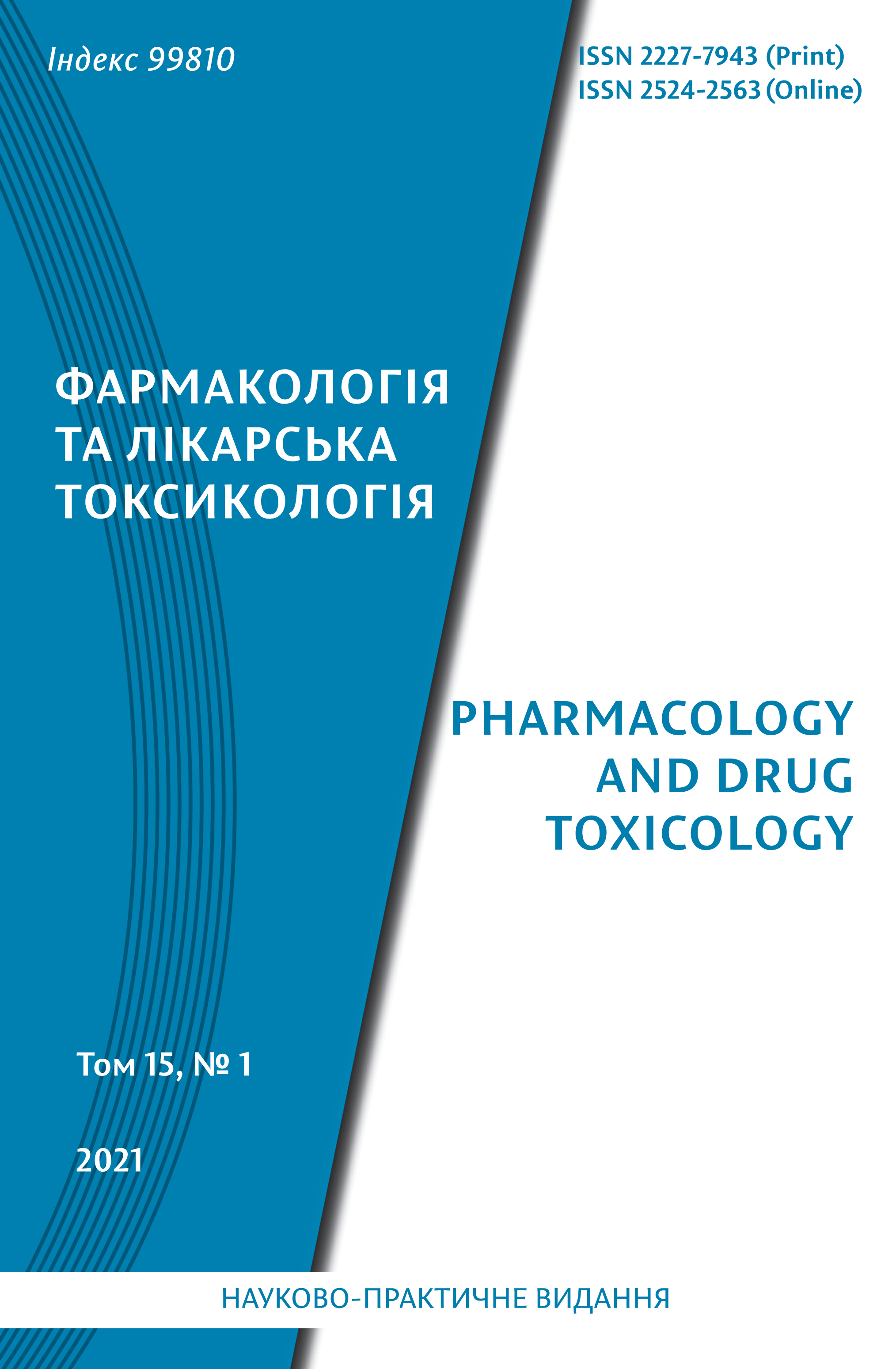Abstract
The purpose of the study is to conduct screening of newly synthesized derivatives of 4-aminobutanoic acid (BC) for the presence of antiamnestic activity and to identify the most active compounds that are promising for further study.
The study included 11 new compounds ‒ derivatives of 4-aminobutanoic acid, which were synthesized at the National University of Pharmacy. The effect of the test compounds on mnestic functions was assessed in mice by the passive avoidance conditional reflex (PACR) test in a model of anterograde amnesia caused by scopolamine (1,5 mg/kg, intraperitoneally).
As a result of pharmacological screening of 11 new derivatives of 4-aminobutanoic acid for the presence of antiamnestic activity, compounds were found that showed activity: KGM-2, KGM-5, KGM-6. Analysis of the «structure-antiamnestic effect» relationship for the synthesized series of compounds showed that the most active are 4-aminobutanoic acid derivatives containing a hydroxymethyl radical (KGM-1 and KGM-2). Introduction of methyl radical to the molecule KGM-2 leads to a decrease in antiamnestic activity (KGM-3). It was found that the replacement of one of the hydroxymethyl radicals in the molecule KGM-2 also helps to reduce the antiamnestic effect. Methylation of the basic compound (4-aminobutanoic acid, BC) contributed to the increase of activity only in cases when methyl and benzyl radicals (compounds KGM-5 and KGM-6) were present in the molecule. The introduction of methyl radicals only (compounds KGM-9; KGM-10 and KGM-11) enhances the antiamnestic activity compared to BC, and in the studied series of compounds they show high antiamnestic activity only at the highest dose of 50 mg / kg. It was found that the compounds KGM-1, KGM-2, KGM-5 show dose-dependent antiamnestic activity.
Thus, among 11 derivatives of 4-aminobutanoic acid three compounds (KGM-2, KGM-5, KGM-6) with pronounced antiamnestic effect were selected as promising for further pharmacological study. The dependence of "structure-antiamnestic effect" has been proven: the introduction of hydroxymethyl radical
enhances antiamnestic activity. The combination in the structure of both benzyl and methyl radicals provides a high antiamnestic effect.
